If you have a new plastic project in mind, one of the first things you’re likely to wonder is, “What will it cost to create this small plastic part?” In order to answer your question, an injection molder will need to know a little more. Though you may not have precise answers, even educated guesses can help shape an accurate quote so you can explore your options.
5 Plastic Project Details Needed for an Accurate Estimate
Posted: January 5, 2017 by
Jon Gelston
Tags:
Plastic Injection Molding
Insert Molding: Tips for Holding the Part in Place
Posted: December 26, 2016 by
Jon Gelston
Tags:
insert molding
Insert molding is a technique in which an item such as a threaded fastener, tube or stud, electrical component, or label is present in the mold. As the viscous plastic fills in around it and hardens, the item becomes a component of the finished part. When performing insert molding, it’s obviously critical that the insert does not move as the mold closes or as plastic is injected under pressure into the cavity — no small feat as hot resin can enter at 20k-30k psi.
Let There Be Light! An Intro to Light Pipes for Electronic Enclosures.
Posted: December 15, 2016 by
Jon Gelston
Tags:
Electronic Enclosures
Light pipes are rigid, transparent plastic shapes that transfer the light from a light-emitting diode (LED) within an electronic enclosure to the outside. They serve many purposes, including letting the user of a device know whether it is on or off, whether its battery is in need of charging, etc. Light pipes can transmit as much as 80 percent of the light emitted by an LED mounted on a printed circuit board, making them a great way to share the status provided by an internal component while keeping that component safely enclosed. They can also be used for decorative purposes like illuminating a product logo.
Getting the Drift on Draft
Posted: December 7, 2016 by
Jon Gelston
Tags:
Plastic Injection Molding
When it comes to the angles used in the plastic part design of injection molded parts, you’d be surprised to learn what a big difference as little as half a degree can make. In particular, the draft of a part can play a major role in everything from how easy it is to eject the part from the mold to how smooth the surface of the finished part is.
Tips for Waterproofing an Electronic Enclosure
Posted: November 30, 2016 by
Jon Gelston
Tags:
Waterproofing
If an enclosure you are developing has to be waterproof, there are a number of issues you must consider. The first, somewhat surprisingly, is terminology. The word “waterproof” can be a bit of a catchall, meaning “watertight,” “water resistant,” “water repellant,” etc. depending on who you are talking to.
Tips for Including Lettering on Plastic Injection Molded Parts
Posted: November 17, 2016 by
Jon Gelston
Tags:
Lettering and Logos
It is common to see lettering or logos on plastic injection molded parts. They may be added to the design for a number of reasons, including to:
Roughing It: Texture and Plastic Parts
Posted: November 9, 2016 by
Jon Gelston
Tags:
Texture
One of the many ways to enhance the look, feel, or function of a part produced through plastic injection molding is by modifying its surface texture. There are many texture and finish options. Some of the more commonly chosen options include:
8 Tips for Picking a Gate Location
Posted: October 28, 2016 by
Jon Gelston
Tags:
Plastic Gate Design
In plastic injection molding, the “gate” is the opening in a mold through which the molten plastic is forced into the cavity, the tooling representation of your part. The type of gate (which I’ve blogged about previously) and its location are critical. In fact, it’s no exaggeration to say that gate location can make or break a part. The type and placement of the gate can affect many aspects of a project including:
A Focus on Quality that Keeps Customers Coming Back
Posted: October 24, 2016 by
Jon Gelston
Tags:
Quality
In plastic injection molding, like any business, there are many keys to success. The flexibility to meet a customer’s unique needs is important. The ability to hit deadlines by working quickly and efficiently is essential. And a focus on producing cost-effective parts is also critical. However, those characteristics (and many others) only matter if you begin with excellent quality.
Common Plastics for Electronic Enclosures
Posted: October 6, 2016 by
Jon Gelston
Tags:
Electronic Enclosures
In developing an electronic enclosure, you may have to answer many of these questions, leaving you wondering where to begin. While there are many, many grades of plastic, here are a few of the types commonly used in electronic enclosures to begin your search.

 SINCE 1993 MADE IN USA
SINCE 1993 MADE IN USA 











